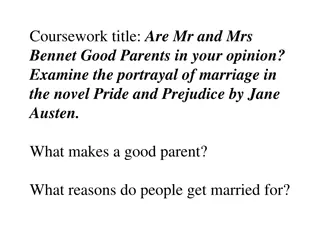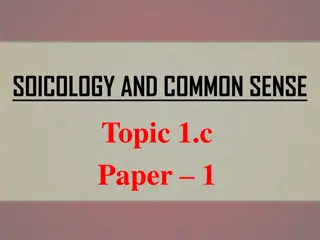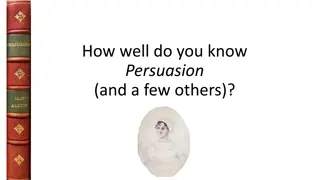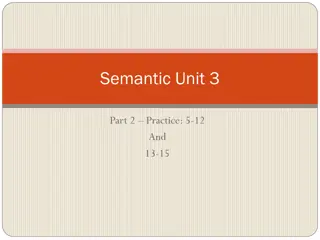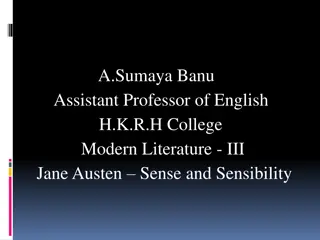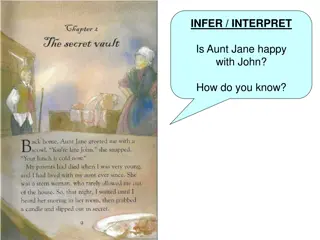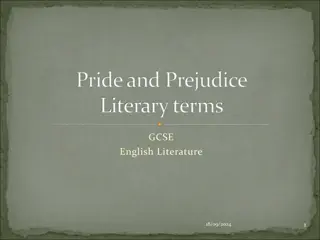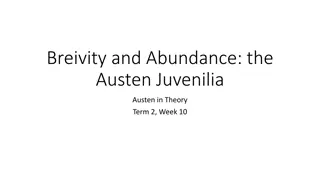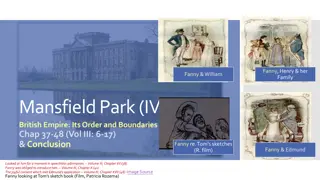Jane Austen Sense and Sensibility
Sense and Sensibility by Jane Austen explores the societal norms and limitations imposed on women in 19th century England through the contrasting characters of Elinor and Marianne Dashwood. The novel satirizes the excessive sensibility and lack of practical sense in women of that era, shedding light on the challenges they faced in education, profession, politics, property ownership, and social mobility primarily through marriage.
Download Presentation

Please find below an Image/Link to download the presentation.
The content on the website is provided AS IS for your information and personal use only. It may not be sold, licensed, or shared on other websites without obtaining consent from the author.If you encounter any issues during the download, it is possible that the publisher has removed the file from their server.
You are allowed to download the files provided on this website for personal or commercial use, subject to the condition that they are used lawfully. All files are the property of their respective owners.
The content on the website is provided AS IS for your information and personal use only. It may not be sold, licensed, or shared on other websites without obtaining consent from the author.
E N D
Presentation Transcript
Jane Austen Sense and Sensibility
Jane Austen A popular English novelist during the 19th century, though she published anonymously. All six of her novels are novels of manners: A novel that thoroughly describes the customs, behaviors, habits, and expectations of a certain social group at a specific time and place. Often the novel of manners is satiric, and is always realistic in depiction. Austen s greatest satiric tool is irony.
Sense and Sensibility: Social Satire Sense VERSUS Sensibility Marianne Dashwood relies on sensibility instead of sense (like her sister Elinor Dashwood), meaning that she is very sensitive and emotional. Sensibility was a popular quality in women, but ladies often went to self-indulgent extremes, which is what Austen satirizes in Sense and Sensibility.
Sense and Sensibility: Social Satire, cont. Exposes and criticizes the limitations of women during 19thcentury England: No chance for high education. Not directly involved in politics. No professions, expected to stay at home. Could not own property. Women had to rely on marriage to secure social positions and financial stability for the future.
William Hogarths Marriage A-la-Mode http://smarthistory.khanacademy.org/hogarths-marriage-a-la-mode.html
Sense and Sensibility Mr. Henry Dashwood dies and leaves all his money to his first wife's son John Dashwood, who is married to Fanny. Mr. Henry Dashwood s widow, Mrs. Dashwood, and her three daughters, Elinor, Marianne, and Margaret, are left with no permanent home and very little income.




